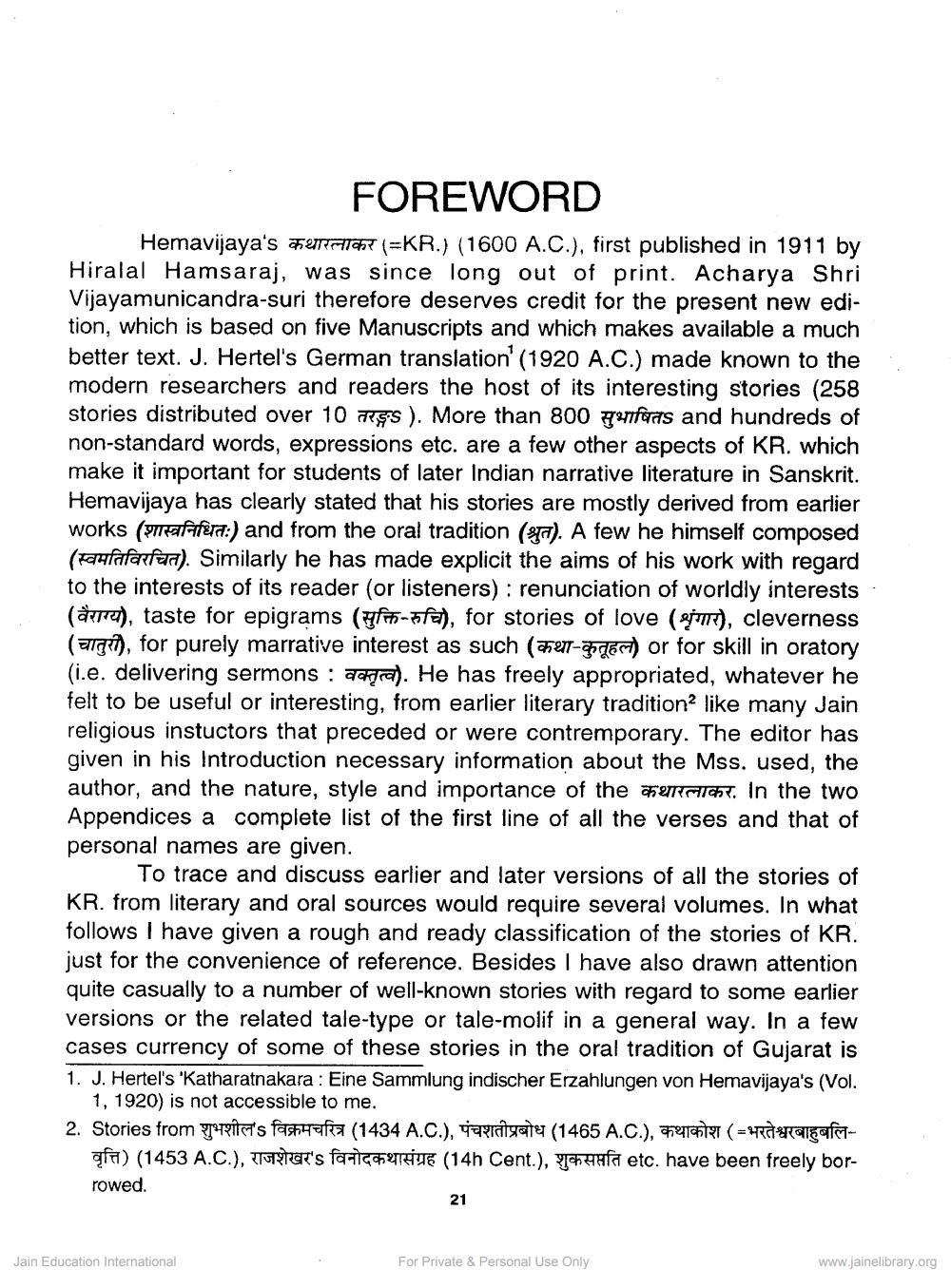________________
FOREWORD
Hemavijaya's TUTTIT (KR.) (1600 A.C.), first published in 1911 by Hiralal Hamsaraj, was since long out of print. Acharya Shri Vijayamunicandra-suri therefore deserves credit for the present new edition, which is based on five Manuscripts and which makes available a much better text. J. Hertel's German translation (1920 A.C.) made known to the modern researchers and readers the host of its interesting stories (258 stories distributed over 10 reys ). More than 800 Forforas and hundreds of non-standard words, expressions etc. are a few other aspects of KR. which make it important for students of later Indian narrative literature in Sanskrit. Hemavijaya has clearly stated that his stories are mostly derived from earlier works (affera:) and from the oral tradition (7). A few he himself composed (स्वमतिविरचित). Similarly he has made explicit the aims of his work with regard to the interests of its reader (or listeners) : renunciation of worldly interests - (वैराग्य), taste for epigrams (सुक्ति-रुचि), for stories of love (शृंगार), cleverness (चातुरी), for purely marrative interest as such (कथा-कुतूहल) or for skill in oratory (i.e. delivering sermons : Tarra). He has freely appropriated, whatever he felt to be useful or interesting, from earlier literary traditiona like many Jain religious instuctors that preceded or were contremporary. The editor has given in his Introduction necessary information about the Mss. used, the author, and the nature, style and importance of the triicht. In the two Appendices a complete list of the first line of all the verses and that of personal names are given.
To trace and discuss earlier and later versions of all the stories of KR. from literary and oral sources would require several volumes. In what follows I have given a rough and ready classification of the stories of KR. just for the convenience of reference. Besides I have also drawn attention quite casually to a number of well-known stories with regard to some earlier versions or the related tale-type or tale-molif in a general way. In a few cases currency of some of these stories in the oral tradition of Gujarat is 1. J. Hertel's 'Katharatnakara : Eine Sammlung indischer Erzahlungen von Hemavijaya's (Vol.
1, 1920) is not accessible to me. 2. Stories from Titi's fasthofa (1434 A.C.), Terasate (1465 A.C.), CATET (=d a f
gfe) (1453 A.C.), Tutan's farigeHUE (14h Cent.), yhhafa etc. have been freely borrowed.
21
Jain Education International
For Private & Personal Use Only
www.jainelibrary.org




